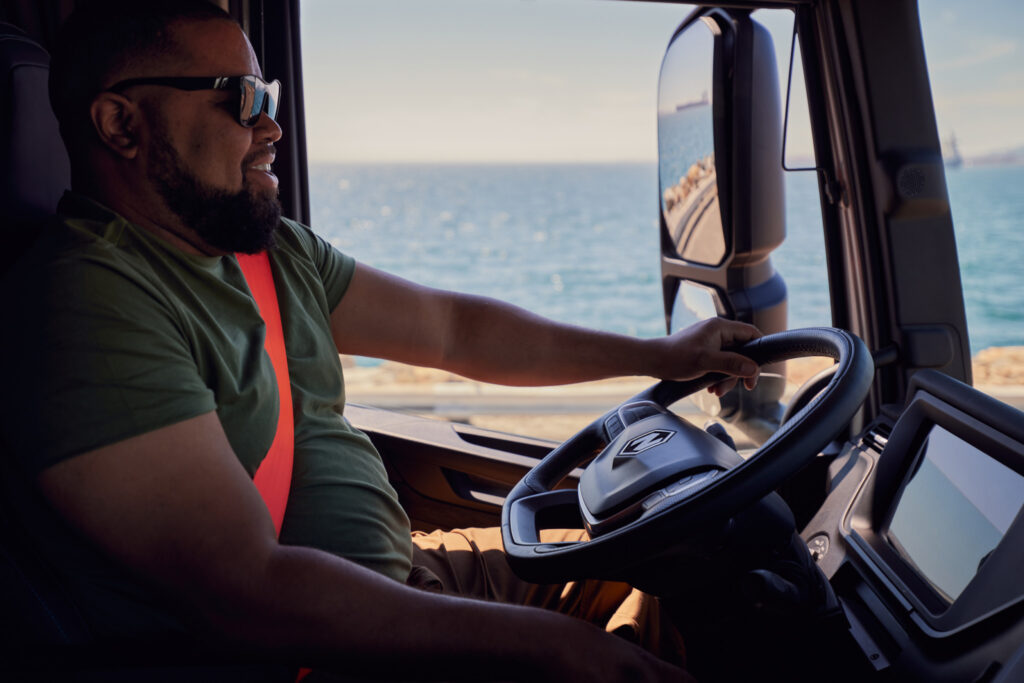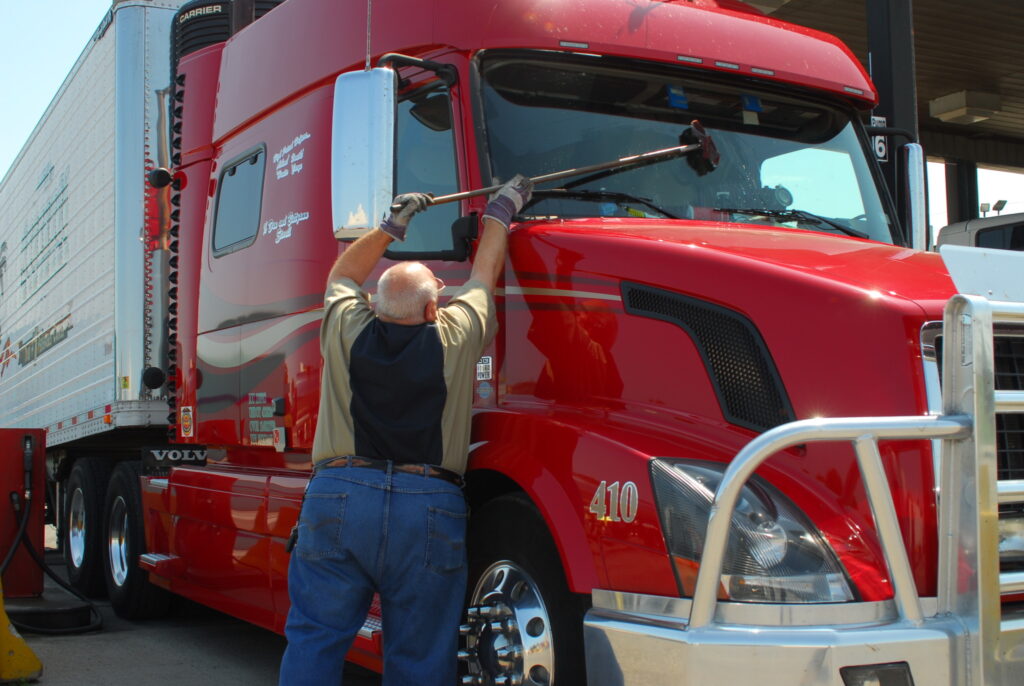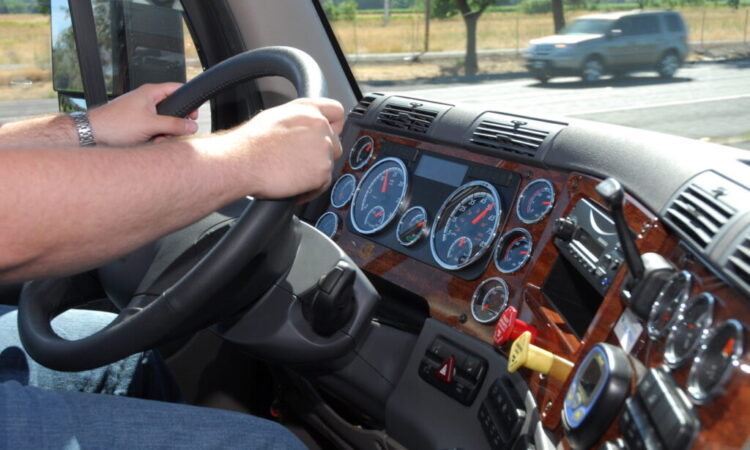Who hasn’t twiddled away few idle seconds by repeatedly bending a paper clip back and forth until in breaks? It’s pretty hard to break it on the first try, but eventually it snaps.
This applies to big things like aircraft as well. Landings subject the undercarriage and wing struts to some enormous stresses, albeit only for a couple of seconds at a time. Aircraft manufacturers have data on metal fatigue that informs inspection intervals so technicians detect cracks before they become critical defects.
Humans don’t have prescribed inspection intervals, but we are well acquainted with the effects of long-term exposure to low-frequency vibration, called whole body vibration (WBV). It has a cumulative and debilitating effect on bones and muscle tissue in our lower backs, and apparently it can lull you to sleep as well. The issue has been exhaustively studied. Experts have little doubt as to the link between WBV and acute back pain, but that doesn’t make prevention any easier.
“It’s a no-brainer,” says Hugh Davies, a University of British Columbia professor in occupational and environmental hygiene. “We don’t need to study this anymore. The question now should be what are we going to do about it?”
While Davies is convinced there’s a link between WBV and back pain, the issue hasn’t caught a lot of traction in terms of policy. That’s a problem for sufferers of this agonizing phenomenon. Davies says agencies like WorkSafe BC and various workers compensation boards are unlikely to accept that low-frequency vibration alone is responsible for drivers’ back problems.
“The smoking gun is missing,” he says, adding that he’s an engineer and researcher, not a medical professional. “When medical people look at what happens to people’s bodies using X-rays, MRIs and the like, they are hard pressed to actually see physical damage in people who are exposed to vibration compared to people who are not.”

Some direct physical link — showing a cause and effect — would make this easier to see, but Davies says the impact of vibration is more insidious, like smoking. Your first cigarette won’t kill you, but the cumulative effects will certainly cause problems later in life.
Some direct physical link — showing a cause and effect — would make this easier to see, but Davies says the impact of vibration is more insidious, like smoking. Your first cigarette won’t kill you, but the cumulative effects will certainly cause problems later in life.
Is your truck putting you to sleep?
- A groundbreaking bit of research from Australia shows that, in addition to contributing to low back pain, low-frequency vibrations can make drivers drowsy. If this is true and research proves conclusive, it could call into question just about all we assume about fatigue-related truck crashes where the driver apparently fell asleep at the wheel. Those drivers may in fact have been very drowsy but not “fatigued” in an Hours of Service context. Professor Stephen Robinson, head of the psychology department at the Royal Melbourne Institute of Technology in Australia, found that low-frequency vibrations — usually in the range of 4-7 hertz (cycles per second) coming through a car floor and seat — are causing driver drowsiness. They lull drivers into a state of inattentiveness, or “zoning out” as some might describe it. “We noticed that the vibration-induced drowsiness can be detected statistically after between 15 to 30 minutes of exposure,” Robinson told the host of the CBC Radio science program, Quirks & Quarks. “That really surprised us. We didn’t expect to see such a rapid effect.” Using a driving simulator mounted on a large steel plate set up to mimic the amplitude and frequency of vibrations experienced in a real car driving on a real road, observers could visually detect when the subjects were starting to become drowsy by a decline in their lane tracking ability. Subjects were also observed with an eye-tracking device that detects drooping eyelids. There was a firm correlation between the drooping eyelids and poor lane tracking. But perhaps most convincing was data from a heart rate monitor and an electroencephalogram (EEG) that monitored brain activity. “We have various brain waves that can be recorded by EEG, and as we move from alertness into the first stages of sleep, or brain waves slow down,” Robinson said. “We believe the sensory input that’s coming from the vibrations starts to synchronize the brain waves and put the brain into sleep.” The heart-rate monitor showed a similar correlation. “When you start to fight tiredness, there’s a particular pattern of variability in the heart rate related to the effort it takes to stay awake,” he noted. “We were looking for that signature. We also looked at steering wheel entropy, which is the ability to make small steering corrections while driving. We get slower at doing that as we become drowsy.” Note the use of the term “drowsiness” in the previous sentence. The authors did not use the term fatigue or fatigued. Call it semantics if you want, but there’s a huge difference between the terms drowsy and fatigued, especially in how they are applied in the context of a truck crash. Fatigued implies the driver was tired. If you want to take it a step further, by inference it implies there might be an Hours-of-Service compliance problem. If the driver had taken their required rest breaks, how could they be so tired as to fall asleep at the wheel? Maybe the driver was lulled to sleep by the steady drone of the vibration of the truck.
“We know that everything, including every part of your body, has what’s called a resonant frequency,” he explains. “That frequency is where that piece of the body will naturally vibrate. It’s like an opera singer shattering a wine glass.”
When the opera singer hits a certain note that happens to be the same resonant frequency of the glass, it causes a buildup of energy in the glass that causes it to vibrate, too, eventually so vigorously that the glass shatters.
“We know that the frequency of the vibration coming up through the floor of a truck is in the right ballpark to resonate your back,” he points out. “That vibration is thought to cause general deterioration of muscles, the nerves, the blood vessels. It just puts wear and tear on them.”
Whole body vibration and lower back pain
According to Peter Johnson, professor emeritus — environmental and occupational health sciences at the University of Washington, and Davies’ colleague, the resonant frequency of the spine is between eight and 12 hertz (cycles per second), which happens to match the resonant frequency of a typical truck or bus chassis.
“Eight to 12 hertz is a very low frequency,” he says. “You can’t hear it, but it just permeates everything and up through your body.”
Sound is vibration. By comparison, the lowest note possible on a modern piano is 27.5 Hz. The best loudspeakers money can buy cannot reproduce sounds below 18 or 20 Hz, which happens to be the lower limit of human hearing.
Johnson has been studying the effects of WBV on workers for decades. He did an exhaustive study for the King Country Metro transit bus service in Seattle, Washington. By analyzing low back pain claims of the fleet’s 5,000 drivers over 15 years, and overlaying exposure to vibration, he was able to prove a link between WBV and poor driver’s seats in the buses.
Johnson says vibration chips away at the various tissues in the back and spine, slowly reducing their ability to absorb shock or jolts. Eventually, some event occurs, such as driving through a particularly nasty pothole, or twisting the spine in an unnatural way, that causes some small but acute trauma in the region.
“People remember the acute events, but there’s nothing to put into memory about the low-amplitude chronic exposure over months, or years, where it builds up,” he suggests. “It’s typically some sort of acute event that typically causes a problem, and people attribute it to the acute event. However, it probably has much or more to do with the chronic stress brought on over time.”
Isolating truck drivers from vibrations
While we can’t eliminate the low-frequency vibration in a truck chassis, we can mitigate its impact by altering the frequency or isolating the driver from the truck’s body.
Interestingly, Davis told TruckNews.com that chassis vibration is more of a problem in on-highway trucks that run at steady speeds on smooth pavement. It’s not as present in off-road trucks subject to oscillating terrain and generally rougher operating conditions.
Industry suppliers have been rising to the vibration-related challenge, though. Seat cushions now include foams of different densities, gel pads, and other designs intended to isolate a driver’s body from the truck chassis.
The Atlas II model from Sears Seating, for example, comes with an electromagnetic vibration damping system called ActiveVRS. It’s a damper that uses an electromagnetic fluid which changes viscosity, responding to a variable electric current produced by sensors elsewhere on the seat. This, the company claims, can reduce the driver’s exposure to low-frequency vibrations by 45%.
Until recently, Bose Corporation was offering a seat suspension that used the same approach as its noise-cancelling headphones. By measuring the amplitude and frequency of the vibration, and mechanically inducing that same vibration to the seat — but slightly out of phase — the vibrations nearly cancelled each other out.
Unfortunately, that seat proved too expensive for most truck fleets. Uptake was low, so the company withdrew the Bose Ride seat from the market.

Look after your driver’s seat, it will look after you
Like most things mechanical, seats will not last forever, no matter how they are designed. The cushions begin to deteriorate over time, the damper shock in the air suspension can wear out, the controls might jam up, or the joints and mounting points may begin to loosen, reducing overall effectiveness.
Seats require no maintenance, per se, but Johnson says King’s County Transit found it beneficial to change out the seat cushions and damper shock every 18 months to keep the seat feeling and performing as new.
Through an elaborate series of experiments and measurements, Johnson has been able to show that a “new” air ride seat can almost triple a drivers “maximum” exposure to vibration compared to an “old” air-ride driver’s seat that’s at least four years old.
“From a commercial standpoint, for large truck fleets, it may not make sense to replace all the seats every few years. But for owner-operators, if it’s your own back, they might be willing to make that investment,” he says.
It certainly makes sense when buying a used truck.

Seat Sense
Tune your driver’s seat for support and comfort
- Truck seats can accommodate an astonishing range of body sizes, weights, and types, from short, slim-framed 50-kg (110-lb.) drivers to tall, full-framed drivers weighing 140 kg (300 lb.) or more. Naturally, the drivers will have to adjust the seat to their needs. Here’s how to tune the seat for optimum support and comfort. Height: Adjust the seat height so your heels can sit firmly on the floor. Thighs should be parallel to the floor. A 90- to 110-degree angle at the hips will keep blood flowing properly to the legs. At such an angle, the knees should be below the hips. And make sure you can maintain full contact with any pedals. In some cases, the entire seat assembly can be moved forward on the pedestal, accommodating drivers with shorter legs. The same can apply in reverse for long-legged drivers. Fore & Aft: Most seat pans can be adjusted so there’s a bit of room between the back of your knee and the seat cushion, with hips pressed firmly against the seat back. Any compression at the back of the knee could create circulation problems in your legs. You should be able to fit two or three fingers between the back of your knee and the front edge of the seat. (Taller drivers may require a longer seat pan.) Once the seat pan has been adjusted, slide the entire seat forward or backward to ensure the pedals and dashboard controls can be easily reached. Seatback Angle: This is as much a comfort decision as a structural concern. The seat back should be positioned so the weight of your upper body presses down nearly vertically onto the hips to properly distribute weight. Tipping the seat back too far puts additional pressure on the lower end of the spine (the lumbar region). That said, drivers with thicker torsos may need to recline the seat to adequately clear the steering wheel, or extend the seat pan as far forward as possible to support the hips and thighs. Back Support: Use the adjustable lumbar support and play with the controls until the support aligns comfortably with the curve in your lower back. Most seats now offer three- or four-way lumbar support for drivers of different builds. But the average female driver is 160 cm (5’3”), while the average male driver is 175 cm (5’9”). Where your lumbar region sits relative to the lumbar support chambers is bound to vary. Once the seat is adjusted to your body type and weight, don’t be shy about changing the adjustments throughout the day. Altering the seat’s shape and support mechanism can relieve stress on the back and hip, and alleviate the aches and stiffness associated with sitting for long periods. A good seat can only do so much to prevent back pain, though. Making sure the seat is properly adjusted to your body type will ensure the seat, and its features, are doing everything they can to keep you healthy.
Testing seat comfort
Volvo Trucks North America’s product marketing manager, Chris Stadler, says OEMs are going to greater lengths than ever to offer high-quality seats to help fleets with recruiting and retention efforts. They have more options, more comfort features, more durable fabrics, and of course more adjustment options, he says.
“The driver population is very diverse,” he says. “It’s challenging, but we have to make sure we can accommodate everybody. That’s where the different offerings come into play. We have a narrow seat that might be for somebody that’s not as large in stature, and then we have a wide base seat that basically will support those types of drivers that are maybe a little bit bigger.”
And speaking of driver preference, Johnson had some interesting observations on “comfort.” It’s a pretty subjective term, but drivers may be doing themselves a disservice by not properly evaluating a seat. He has studied how drivers evaluate seat comfort.
“Typically, comfort is a static test where you sit in the seat but don’t test the suspension,” he observes. “We had them sit in three different truck seats for a minute. And they rank the truck seats. And then we had them sit in the same truck seats again, but for 15 minutes before ranking them. Initially, they ranked all the seats equally after their one-minute time. But after sitting in them 15 minutes, the seats differentiated themselves.
“And that’s without vibration in that 15-minute period. When you’re in your truck, you’re often in that seat for four hours or more at a time. The foam probably creeps or loses some resilience over the first half hour, where you have your final comfort level. There’s some work to be done there,” he notes.
If not for comfort, then why invest in good seating?
According to statistics found in one of the studies Davies has published, in 2012, annual injury rates in the B.C. trucking industry were more than twice that of the B.C. average (5.0 per 100 person-years), and injury durations were 70% higher (59 days).
In B.C. Workers’ Compensation claims from the trucking industry, the back is the most common body part injured, and back injuries are the most expensive injury to incur.
“Whole-body vibration is a risk factor that can contribute to the onset and development of low back disorders by increasing muscle forces and muscle fatigue, decreasing the disc height in the lumbar spine, and elevating spinal load,” the endnotes to the study concluded.
“With this kind of vibration, you can’t feel or sense weakening the structure of your back, but it happens cumulatively over time,” Johnson says. “Over time, it makes a huge difference. And then, finally, it’s a turbulent event like a shock or a jolt that is often the straw that finally cracks the camel’s back.”
Or in this case, the truck driver’s back.


